Category Archives: Analytics
OKRs vs KPIs vs KRAs: Differences and Examples
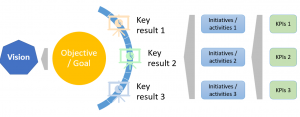
Last updated: 21st Feb, 2024 The difference between OKRs , KPIs, and KRAs is often confused, but the concept is a great way to measure the progress toward achieving your business objectives. As business analysts, product managers, and project or team leaders, it is important to understand the concepts of OKRs, KPIs, & KRAs and what’s the differences between them. In this blog post, we will discuss OKR vs KPI vs KRAs and how they can be used for setting goals/objectives and measuring different aspects of your team’s and organization’s performance in achieving those goals. We’ll also go over real-world examples so you can get a better understanding of how these metrics …
Problem, Symptoms & Root Cause Analysis (RCA) Examples
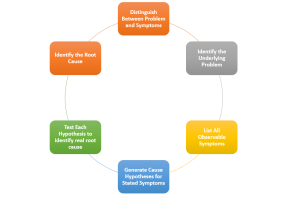
Last updated: 30th Jan, 2024 Have you found yourself stuck in a cycle of solving the same or similar problems over and over again? Ever wondered why some solutions seem to only offer a temporary fix? Have you wondered if you have identified the correct problem or if you are trying to fix one of the symptoms? The key lies in your understanding of how we define problem statements, associated symptoms, root causes, and approach to problem-solving, which is fundamentally rooted in analytical thinking and critical thinking. What exactly is the difference between a problem and its symptoms? And why is it crucial to conduct a root cause analysis to …
Innovative Thinking: Methods & Examples

Innovative thinking is a multifaceted approach that leverages different styles of thinking to tackle problems and generate groundbreaking solutions. It encompasses first principles thinking, which digs down to the foundational elements of an issue, analytical thinking that systematically dissects a problem into smaller, more manageable parts, critical thinking that involves evaluating and judging the information and ideas at hand, and infinite thinking, which pushes the boundaries of imagination to consider limitless possibilities. Each of these styles contributes uniquely to the process of innovation, offering a comprehensive toolkit for tackling challenges in novel and effective ways. In this blog, we’ll delve deeper into each of these styles, exploring how they individually …
First Principles Thinking using ChatGPT

Have you ever wondered why an object such as a chair is shaped the way it is, or why it’s even needed in the first place? What mystery unravels when we dig into the very essence of everyday objects and concepts around us? Navigating through a universe having well-established beliefs and customary wisdom, the hunt for innovative answers and deciphering the secrets hidden behind the everyday becomes not just a curiosity, but a necessity. This is where first principles thinking comes to the rescue. I have posted a detailed blog on First principles thinking – First principles thinking: Concepts & Examples. In this blog, let’s explore how we can utilize …
Analytics Maturity Model for Analytics COE
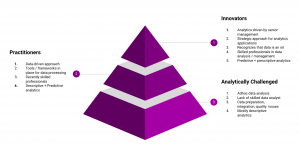
As businesses continue to embrace digital transformation, data analytics has become an essential component of business strategy. As a result, many organizations have established or are in the process of setting up an Analytics Center Of Excellence (Analytics COE) to drive analytics initiatives and improve their overall data-driven decision-making capabilities. TO achieve this objective, analytics COE requires a framework for assessing the maturity of their analytics practice. This is where analytics maturity model kicks in. The Analytics Maturity Model can be defined as a framework that enables organizations to assess their current analytics capabilities, identify areas for improvement, and establish a roadmap for analytics maturity. It provides a structured approach …
Decision Science & Data Science – Differences, Examples
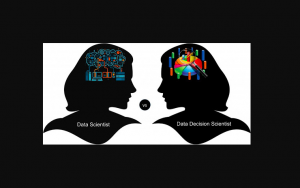
Decision science and Data Science are two data-driven fields that have grown in prominence over the past few years. Data scientists use data to arrive at the truth by coming up with conclusions or predictions about things like customer behavior and assess suitability of those conclusions / predictions, while decision scientists combine data with other information sources to make decisions and assess suitability of those decisions for enterprise-wide adoption. The difference between data science and decision science is important for business owners to understand in clear manner in order to leverage the best of both worlds to achieve desired business outcomes. In this post, you will learn about the concepts …
Spend Analytics – 5 Ws of Spend Analysis
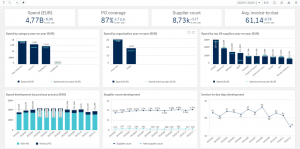
In this post, you will learn about 5 Ws of spend analytics. In case you are a procurement professional looking to understand use cases related to spend analytics, you may find this post to be very useful. In simple words, spend analytics is about extracting insights from spend in different procurement categories. What are we spending on? First and foremost, it is important to get visibility on what items are we spending on. This can be achieved using a dashboard. This form of analytics is also called descriptive analytics. Analyzing item spends can be termed as Item spend analytics. The items can be related to direct or indirect procurement. Indirect …
Actionable Insights Examples – Turning Data into Action
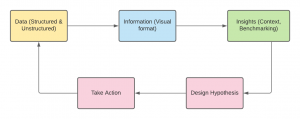
In this post, you will learn about how to turn data into information and then to actionable insights with the help of few examples. It will be helpful for data analysts, data scientists, and business analysts to get a good understanding of what is actionable insight? You will understand aspects related to data-driven decision making. Before getting into the details, let’s understand what is the problem at hand? The school authority is trying to assess and improve the health of students. Here is the question it is dealing with: How could we improve the overall health of the students in the school? We will look into the approach of finding the …
Starting on Analytics Journey – Things to Keep in Mind

This post highlights some of the key points to keep in mind when you are starting on data analytics journey. You may want to check a related post to assess where does your organization stand in terms of maturity of analytics practice – Analytics maturity model for assessing analytics practice. In the post sighted above, the analytics maturity model defines three different levels of maturity which are as following: Challenged Practitioners Innovators At whichever level you are in terms of maturity of your analytics practice, it may be good idea to understand the following points to come up with data analytics projects. Believe that a lot of prior work is required …
Data Quality Challenges for Analytics Projects
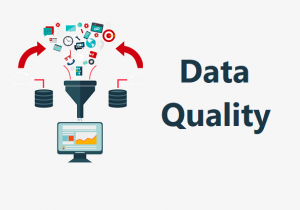
In this post, you will learn about some of the key data quality challenges which you may need to tackle with, if you are working on data analytics projects or planning to get started on data analytics initiatives. If you represent key stakeholders in analytics team, you may find this post to be useful in understanding the data quality challenges. Here are the key challenges in relation to data quality which when taken care would result in great outcomes from analytics projects related to descriptive, predictive and prescriptive analytics: Data accuracy / validation Data consistency Data availability Data discovery Data usability Data SLA Cos-effective data Data Accuracy One of the most important …
Top 10 Types of Analytics Projects – Examples

In this post, you will learn about some of the most common types of data analytics projects which can be executed by the organization to realise associated business value from analytics projects and, also, gain competitive advantage with respect to the related business functions. Note that analytics projects are different from AI / ML projects. AI / ML or predictive analytics is one part of analytics. Other types of analytics projects include those related with descriptive and prescriptive analytics. You may want to check out one of my related posts on difference between predictive and prescriptive analytics. Here are the key areas of focus for data analytics projects: Cost reduction: …
Predictive vs Prescriptive Analytics Difference
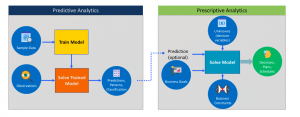
In this post, you will quickly learn about the difference between predictive analytics and prescriptive analytics. As data analytics stakeholders, one must get a good understanding of these concepts in order to decide when to apply predictive and when to make use of prescriptive analytics in analytics solutions / applications. Without further ado, let’s get straight to the diagram. In the above diagram, you could observe / learn the following: Predictive analytics: In predictive analytics, the model is trained using historical / past data based on supervised, unsupervised, reinforcement learning algorithms. Once trained, the new data / observation is input to the trained model. The output of the model is prediction in form …
Top 10 Analytics Strategies for Great Data Products
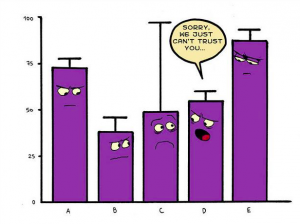
In this post, you will learn about the top 10 data analytics strategies which will help you create successful data products. These strategies will be helpful in case you are setting up a data analytics practice or center of excellence (COE). As an AI / Machine Learning / Data Science stakeholders, it will be important to understand these strategies in order to deliver analytics solution which creates business value having positive business impact. Here are the top 10 data analytics strategies: Identify top 2-3 business problems Identify related business / engineering organizations Create measurement plan by identifying right KPIs Identify analytics deliverables such as analytics reports, predictions etc Gather data …
Top 5 Data Analytics Methodologies

Here is a list of top 5 data analytics methodologies which can be used to solve different business problems and in a way create business value for any organization: Optimization: Simply speaking, an optimization problem consists of maximizing or minimizing a real function by systematically choosing input values (also termed as decision variables) from within an allowed set and computing the value of the function. An optimization problem consists of three things: A. Objective function B. Decision variables C. Constraint functions (this is optional) Linear / Non-linear programming with constrained / unconstrained optimization Linear programming with constrained optimization Objective function and one or more constraint functions are linear with decision variables as continuous variables Linear programming with unconstrained optimization Objective function …
I found it very helpful. However the differences are not too understandable for me